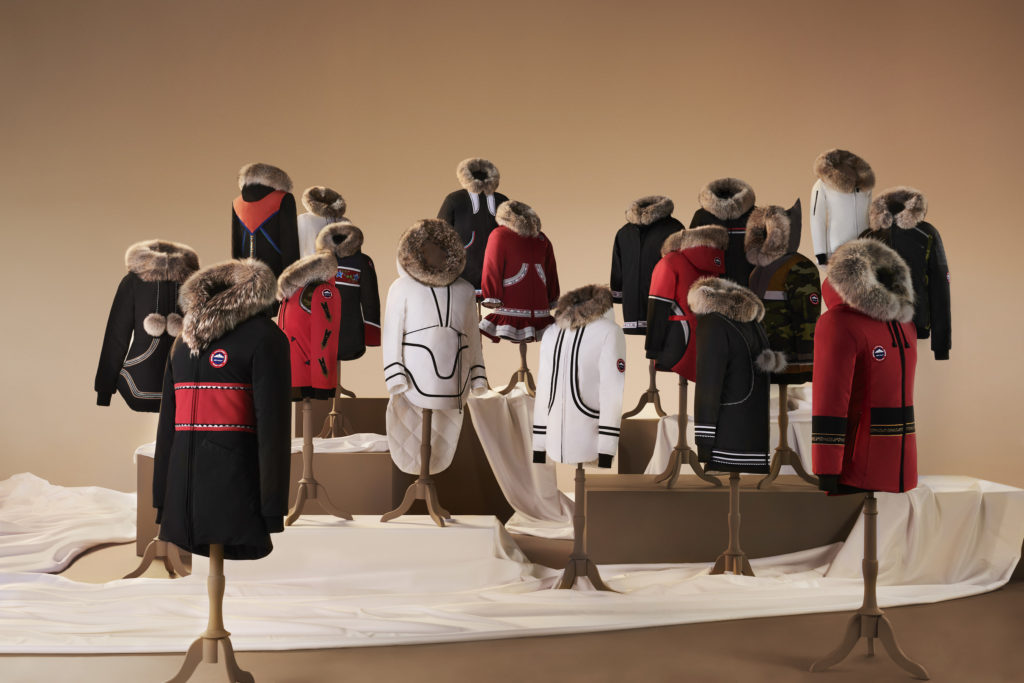Busy! That’s the most common answer for any business person who is asked “how are you doing?” And it’s true. We’re racing to meet deadlines, hit short term sales goals and achieve our corporate objectives for the quarter. But what often gets lost in the rush is the ability to explore deeper and consider the long term. Often, this means finding a brand’s north star. How to do that? Start with purpose. With so much noise in our daily lives, it’s more important than ever to get authentically aligned with your beliefs, actions and tribe.
Purpose is a powerful way to unite people emotionally.
To better understand the benefits of finding your brand purpose, In Partnership With connected with James Fisher, formerly the Senior Global Brand Director at Canada Goose. Over three years, he led a creative renaissance to find and activate its purpose during an era of transformative growth that helped move the brand into uncharted territory.
The State of Brand Purpose Today
While purpose has been buzzing in the marketing world for years, brands often fail to appreciate the hard work and patience needed to do it right. Today, the difference between being purpose-driven (the few) and virtue signalling (the many), could not be clearer.
True purpose is when the beliefs and actions of the business and brand are one.
Patagonia is the ultimate example of an activist brand (an extreme state of purpose). TOMS shoes and Ben & Jerry’s are also shining examples in culture today. When you dig into their stories, they share an unwavering core belief in something greater than themselves and have oriented their entire business towards it. This is why they resonate so powerfully with consumers. Consistency, bravery and authenticity. It’s not for the faint of heart or anyone looking for quick and easy results.
In recent years, purpose was treated as a formula of sorts. The difficulty is of course, you can’t formulate authenticity and practically speaking, retrofitting purpose into an existing business especially at scale, is a formidable task.
Who Should Recognize A Brand’s Purpose
Purpose isn’t something that marketing does, it’s your business strategy.
Purpose has three audiences: internal, partners and consumers.
First, start with a brand’s employees. This might sound obvious, but internal adoption is often overlooked in the rush to get credit. Next, you have your partners, who like employees, are drivers of your business. Without these two audiences on side, how can you expect your purpose to mobilize others? Finally, your external audiences include media, influencers and consumers, which is where brands tend to start with purpose. In doing so, their objective is self-serving – the opposite of purpose.
Delivering on Authentic Purpose
Authenticity, another brand building buzz word, is one of the hardest parts of purpose. At Canada Goose, a storied brand with over 60 years’ history, authenticity felt like golden handcuffs. On the one hand, it made the brand teams’ job difficult because of the creative debate that came with every decision. On the other, when they struck the right note, magic happened.
When you get brand authenticity right, you unleash passion in your people and creativity in your work that you never thought possible.
Project Atigi: A Case Study
An example that James is especially proud of is Project Atigi, a social enterprise Canada Goose launched in 2019. It creates economic opportunities for remote communities in the Canadian Arctic. While consumers think of expertly-built parkas designed for extreme weather, the brand reveres Inuit as the original parka makers. To honour their traditions of sewing, Canada Goose commissioned bespoke, handmade parkas by Inuit seamstresses and donated the proceeds back to the north.

The internal momentum of Project Atigi was unlike anything James had ever seen. It touched almost every department and struck an emotional chord with employees across borders and teams. The response from media and consumers was overwhelmingly positive too. Without any paid media, the story garnered more reach than any of the brands’ marketing campaigns that year.
James credits the insight behind the idea and authenticity with which it was brought to life, with connecting audiences to a deeper side of the brand and the credit it received for “cultural appreciation, not appropriation.”
Discovering Your Brand’s Purpose
James finds one of the most effective ways to discover your brand purpose is diving into the Founders’ story to understand why the business was created in the first place. In doing so, you gain insight into the decisions, underlying values and brand history which can help uncover a brands’ authentic role in culture today.
There’s innocence and authenticity that can be found when you talk to the people who were there from the beginning. Founders are generally driven by passion and ideas. So, what you’re searching for is the belief system behind those ideas. The untold, personal stories of “the early days” or the moments of lived values.
Not every brand needs a purpose and not every purpose needs to be altruistic.
Once you’ve defined your brand’s purpose, the next question should be putting actions behind it. Although it should improve people’s lives in some way, it doesn’t need to transform them (no brand can do that). And it definitely doesn’t need to save the world. The point here is to focus on building trust through credible actions, not words.
Don’t Rush to Find Your Brand Purpose
For business leaders considering whether they need a purpose – or what purpose might mean to them – James advises them to play the long game. This applies to brand building in general. While there’s temptation to show immediate ROI, approaching purpose with a short term mindset doesn’t work. At best, you might have a successful campaign on your hands; at worst it could be brand damaging. Only when purpose is embedded and lived by every aspect of the business, can you realize the impact you set out to achieve in the first place.
Brand building in 2020 is about strategy, bravery and playing the long game.
Today, brands are being looked to more and more for leadership and enacting social change. It’s a tall order, especially in a global pandemic, when survival hangs in the balance for some industries. But, if past economic crises have taught us anything, it’s that the brands who stay the course, lean in and do right by people, are the ones who yield trust, loyalty and longevity in the end.
If you’re working for a brand driven by purpose, you’ll be busy. If not, ask yourself: could this be the moment to ignite the people, passion and purpose you never knew you had?
In Partnership With
James Fisher is the former Senior Global Brand Director at Canada Goose, who led the brand during an era of transformative growth pre / post IPO. Over three years, he established the strategic and creative foundations for global brand, product and integrated marketing which fuelled brand love and commercial growth, nearly doubling revenues to $1B. Today, James leads Clinch, a brand strategy and marcom consultancy. There, he helps brands achieve cultural relevance and commercial success with essential services in strategy, creative, planning and production.
Tim Bishop, CM is a multi-disciplined executive with a proven record of optimizing strategic efforts to expand the influence of leading organizations, such as the Canadian Marketing Association, Cineplex Entertainment, Lavalife.com, IMI International and Northstar Research Partners. In Partnership With is his latest focus to curate Canadian marketing experts to celebrate the power of strategic partnerships in a perspective-based content series.

